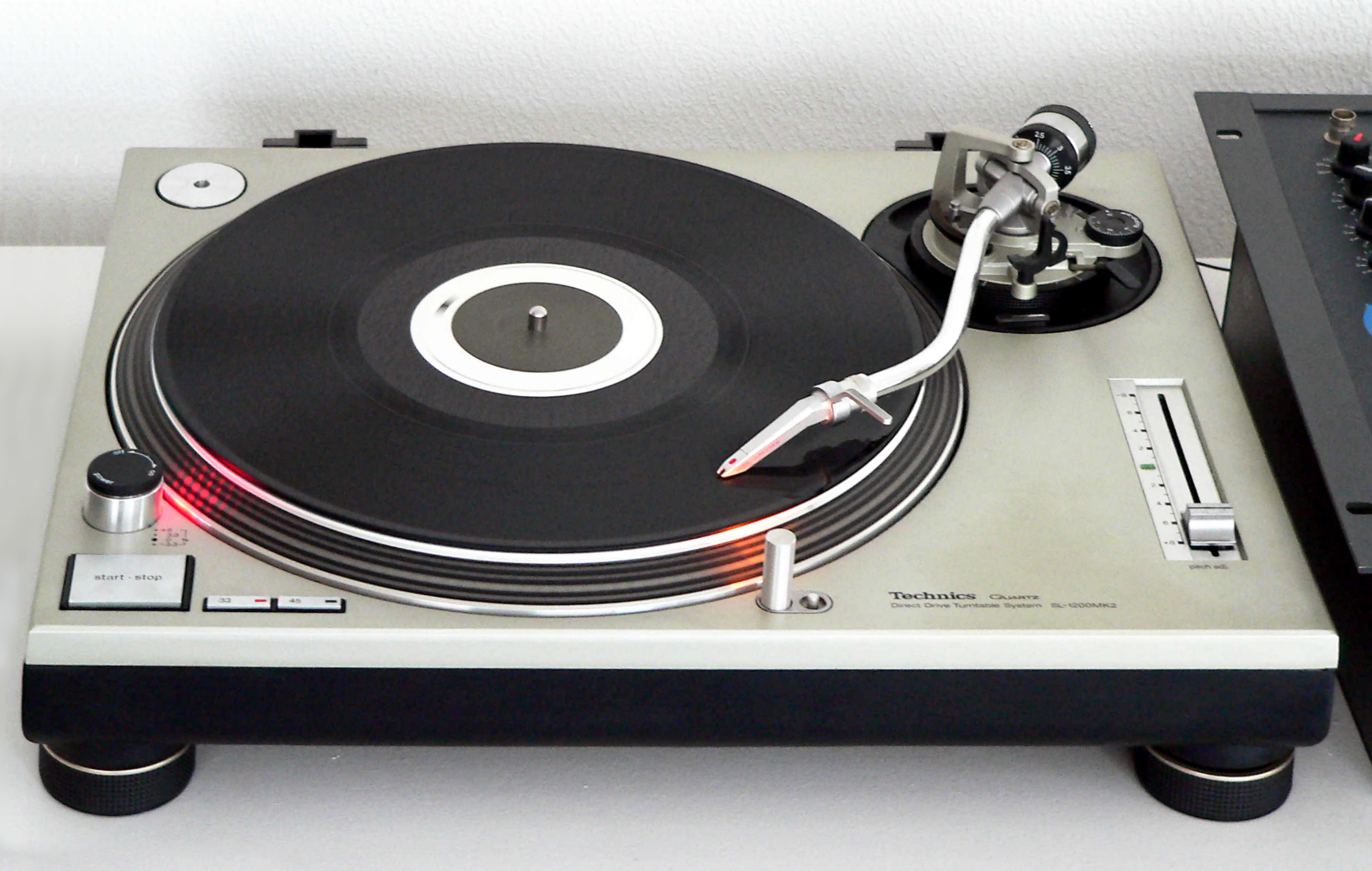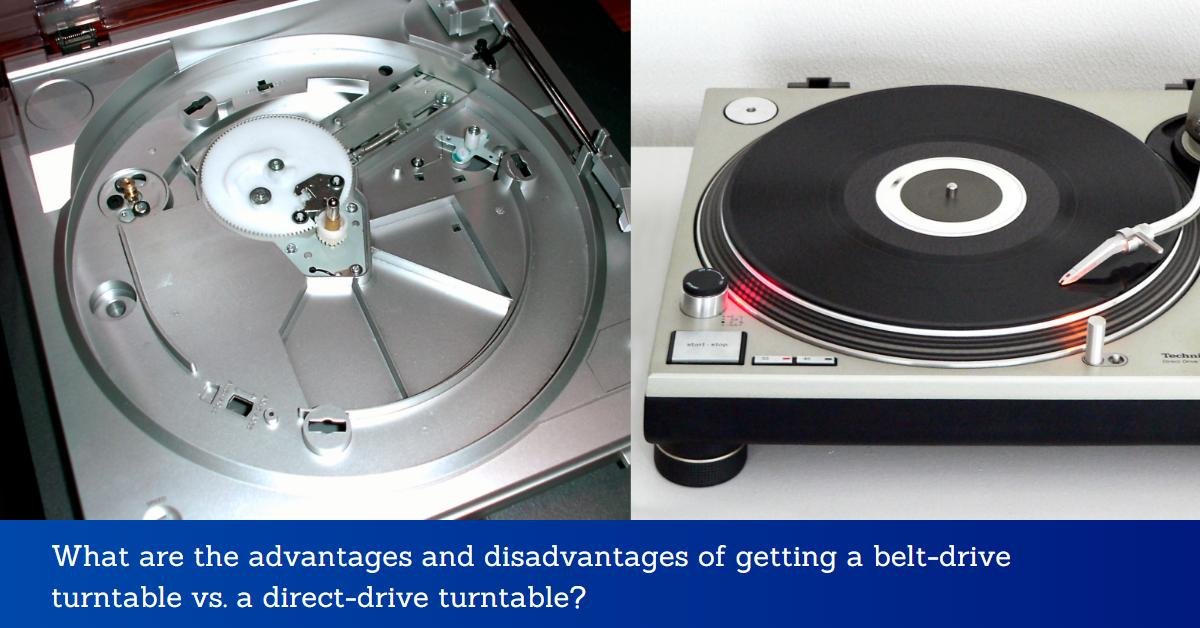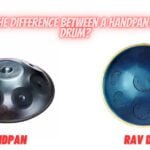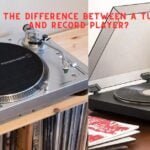Belt-drive turntables are more affordable and have less motor noise and vibration, but they are less accurate and have a slower start-up time. Direct-drive turntables are more accurate and durable, but they are more expensive and have more motor noise and vibration.
Advantages and Disadvantages of Belt-Drive Turntables
Belt-drive turntables were popular in the 1970s and 1980s. They are still used today because of their unique sound and affordability. Below are the advantages and disadvantages of belt-drive turntables:
Advantages:
- Reduced Motor Noise: Belt-drive turntables have a separate motor located away from the platter. This reduces the amount of noise the motor makes when spinning the platter. This results in less noise and a smoother sound.
- Lower Cost: Belt-drive turntables are generally less expensive than direct-drive turntables. They are a good option for those who are just starting with vinyl records.
- Reduced Vibration: The belt absorbs the vibrations that come from the motor. This reduces the amount of vibration that gets transmitted to the platter. This results in less distortion and a cleaner sound.

Disadvantages:
- Less Accurate Speed: Belt-drive turntables are not as accurate as direct-drive turntables when it comes to speed. The belt can stretch over time, causing the platter to spin slower or faster than intended.
- Slower Start-Up Time: Belt-drive turntables take longer to get up to speed than direct-drive turntables. This can make it difficult to cue a record accurately.
- Belt Wear and Tear: The belt on a belt-drive turntable can wear out over time, causing the platter to spin at an incorrect speed. This can lead to a distorted sound.
Advantages and Disadvantages of Direct-Drive Turntables
Direct-drive turntables were introduced in the 1960s as an improvement over belt-drive turntables. They have become more popular in recent years because of their accuracy and durability. Below are the advantages and disadvantages of direct-drive turntables:
Advantages:
- Accurate Speed: Direct-drive turntables are more accurate than belt-drive turntables when it comes to speed. The motor is directly connected to the platter, which eliminates any potential speed inconsistencies.
- Quick Start-Up Time: Direct-drive turntables have a fast start-up time. This makes it easier to cue a record accurately and quickly.
- Durability: Direct-drive turntables are more durable than belt-drive turntables. The motor is directly connected to the platter, which eliminates the need for a belt. This means there are fewer parts to wear out or break over time.

Disadvantages:
- Motor Noise: Direct-drive turntables can be noisier than belt-drive turntables. The motor is located directly under the platter, which can result in more vibration and noise.
- Higher Cost: Direct-drive turntables are generally more expensive than belt-drive turntables. This can make them less accessible for those who are just starting with vinyl records.
- More Vibration: Direct-drive turntables have more vibration than belt-drive turntables. This can result in more distortion and a less clean sound.
What is the advantage of belt drive fans compared with direct drive fans?
Belt drive fans are generally quieter than direct drive fans. This is because the motor is mounted away from the fan and is connected to the fan blades by a belt. The belt absorbs some of the noise and vibration from the motor, making the fan quieter. Additionally, belt drive fans have variable speed settings which can be adjusted to suit different needs.
Are belt drive turntables bad?
No, belt drive turntables are not bad. In fact, many audiophiles prefer belt drive turntables because they produce less noise and vibration compared to direct drive turntables. They also have a slower start-up time which allows the motor to reach a stable speed before the record starts spinning. This can help reduce any unwanted noise or distortion. However, belt drive turntables may not be suitable for DJing or other applications that require precise speed control.
Can you DJ with a belt-drive turntable?
Yes, you can DJ with a belt-drive turntable, but it may not be the best option. Belt drive turntables are not designed for the rigorous use and frequent speed changes that are required for DJing. Direct drive turntables are generally considered to be the better option for DJing because they provide more precise speed control and have faster start-up times. However, if you are a casual DJ or just starting out, a belt drive turntable may be a good option to start with.
FAQs
Which type of turntable is better for DJing?
Direct-drive turntables are generally better for DJing because they have a fast start-up time and are more durable. Belt-drive turntables are better for listening to music at home.
Can I upgrade my belt-drive turntable to a direct-drive turntable?
Unfortunately, it is not possible to upgrade a belt-drive turntable to a direct-drive turntable. They are two different types of turntables with different designs and mechanisms.
Do I need to replace the belt on my belt-drive turntable?
Yes, the belt on a belt-drive turntable will eventually wear out and need to be replaced. This is a simple and inexpensive fix that can improve the sound quality of your turntable.
How often do I need to replace the belt on my belt-drive turntable?
The frequency of belt replacement depends on how often you use your turntable. If you use it frequently, you may need to replace the belt every 1-2 years. If you use it less often, the belt may last up to 5 years.
Are direct-drive turntables more expensive than belt-drive turntables?
Yes, direct-drive turntables are generally more expensive than belt-drive turntables. This is because they are more accurate and durable, and have fewer parts that can wear out or break over time.
Conclusion
In conclusion, both belt-drive and direct-drive turntables have their advantages and disadvantages. Belt-drive turntables are more affordable and have less motor noise and vibration, but they are less accurate and have a slower start-up time. Direct-drive turntables are more accurate and durable, but they are more expensive and have more motor noise and vibration.
When choosing between the two types of turntables, it ultimately comes down to personal preference and what you plan to use the turntable for. If you are a casual listener or just starting with vinyl records, a belt-drive turntable may be a good option. If you are a serious audiophile or plan to use the turntable for DJing, a direct-drive turntable may be the better choice.
Our previous article is on: What Is The Difference Between A Handpan And A Rav Drum?



[…] turntable is also often used by DJs and music producers, as it allows for manual adjustments to be made to […]
[…] investing in a turntable is worth it depends on your personal preferences and circumstances. If you’re a music […]
[…] cartridge. Belt-driven turntables are generally considered to offer better sound quality, while direct-drive turntables are more durable. Consider your budget and whether you want an automatic or manual turntable. […]